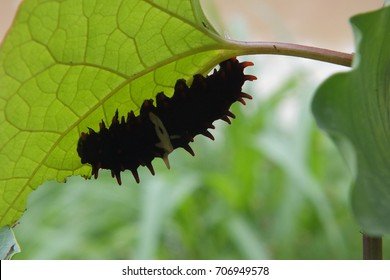
Bootlace worms, known scientifically as *Lineus longissimus*, are some of the longest animals on the planet, often stretching over 30 meters (98 feet)! They may not be household names, but their role in estuarine ecosystems is nothing short of remarkable. These fascinating creatures help break down organic material, improve sediment quality, and serve as a food source for various marine animals. So, what exactly makes them tick? Let me explain how bootlace worms fit into the larger picture of estuarine health.
What Are Bootlace Worms?
Bootlace worms are a type of ribbon worm, belonging to the phylum Nemertea. You might have heard of other animals like nematodes or flatworms, but ribbon worms are distinct because of their long, slender bodies and incredible flexibility. They can bend, twist, and move through the sediment like a snake swimming through grass. Honestly, it’s mesmerizing to watch them in action!
These worms are usually found buried in the mud or sand of estuarine habitats. They have a unique feeding mechanism that involves a long proboscis, which can shoot out to capture prey. Bootlace worms are mostly predatory, feeding on small invertebrates like crustaceans and mollusks. But they also play a bigger role in the food web, making them essential players in the health and balance of their ecosystem.
The Role of Bootlace Worms in Estuarine Ecosystems
Bootlace worms contribute significantly to the overall health of estuarine ecosystems. They help break down organic material, transforming it into nutrients that other organisms can utilize. Think of them as nature’s recyclers. By consuming decaying matter, they release nutrients back into the sediment, which plants and other organisms rely on to grow and thrive.
Furthermore, their burrowing activity helps aerate the sediment. When bootlace worms dig through the mud, they create tiny tunnels that allow water and oxygen to circulate. This is vital for the numerous microorganisms that inhabit the sediment, ensuring a healthy balance in the ecosystem. Without these worms, estuaries could become stagnant and less productive.
The Food Web Connection
You might be wondering how bootlace worms fit into the food web. Well, they serve as an important food source for various predators. Fish, birds, and even larger invertebrates rely on bootlace worms for nutrition. Their long bodies and meaty texture make them an attractive meal, especially for species that frequent estuarine environments.
Imagine a shorebird probing the mud for a tasty snack. Behind that seemingly simple action lies an entire network of interactions. When these birds eat bootlace worms, they’re not just satisfying their hunger; they’re also participating in the ecosystem’s intricate balance. By understanding these connections, we can appreciate the importance of every species, no matter how small.
Bootlace Worms and Environmental Health
The presence of bootlace worms can indicate the overall health of an estuarine ecosystem. Healthy populations of these worms often signal a balanced environment, where nutrient cycling and energy flow are functioning well. Conversely, a decline in their population can suggest environmental stressors, such as pollution or habitat degradation.
Monitoring bootlace worm populations can help scientists assess the impact of human activities on estuarine ecosystems. If numbers start to drop, it may be time to take action. By keeping an eye on these intriguing organisms, we can better understand how to protect and preserve the delicate balance of life in our estuaries.
Threats to Bootlace Worms
Despite their resilience, bootlace worms face several threats in their natural habitats. One of the biggest challenges is **pollution**. Heavy metals, plastics, and nutrient runoff can wreak havoc on the delicate balance of estuarine ecosystems, impacting not just bootlace worms but a multitude of other species as well.
Additionally, climate change poses a significant threat. Rising sea levels, warmer temperatures, and altered salinity levels can disrupt the habitats where bootlace worms thrive. Both human activity and natural changes can lead to declining populations, which in turn affects the entire food web.
Conservation Efforts
Conserving bootlace worms and their estuarine habitats is crucial. Environmental organizations and researchers are working tirelessly to monitor and protect these ecosystems. Initiatives aimed at reducing pollution, restoring habitats, and promoting sustainable practices can help ensure that bootlace worms continue to thrive.
Moreover, raising awareness about the importance of estuarine health can engage local communities in conservation efforts. By understanding the role of bootlace worms, people can be inspired to take action—whether it’s participating in clean-up events or advocating for better policies.
Bootlace worms may seem like simple creatures, but their impact on estuarine ecosystems is profound. By breaking down organic materials, supporting nutrient cycling, and serving as a food source for various animals, they play an essential role in maintaining the health of these unique environments. As we face environmental challenges, it’s more important than ever to appreciate and protect the delicate balance of life in our estuaries. So, the next time you think about ecosystems, don’t forget about the incredible bootlace worm and all the wonders of the estuarine world!
